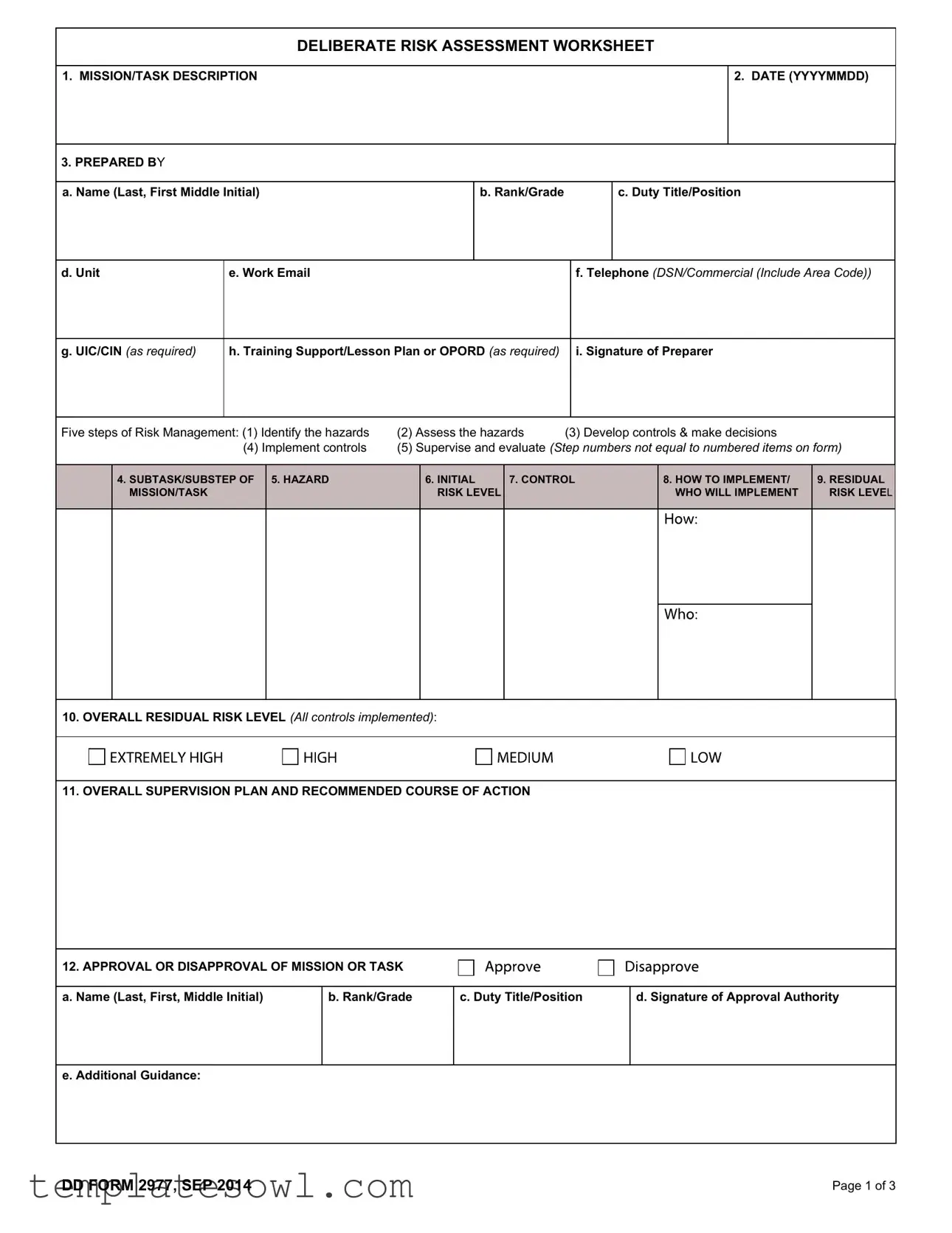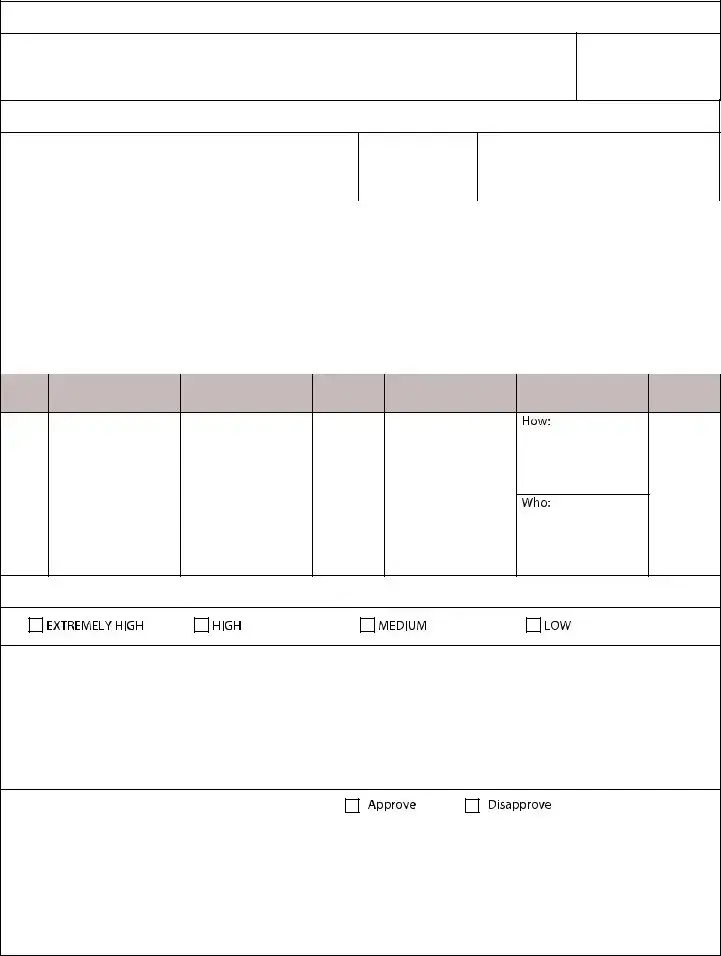Filling out the DD Form 2977, or the Deliberate Risk Assessment Worksheet, can be a meticulous process. Many individuals encounter common pitfalls that can affect the integrity of their submissions. One of these mistakes is failing to provide a clear and detailed Mission/Task Description. It is essential to briefly outline the overall mission or task for which the risk assessment is being conducted. A vague or general description can lead to misunderstandings about the risks involved.
Another frequent error involves the Date section. While this section may seem straightforward, it is crucial to enter the date correctly in the specified format (YYYYMMDD). Incorrect date entries can cause complications in tracking and auditing purposes, impacting the assessment’s reliability.
The preparation section is often improperly filled out. When providing information about the preparer, individuals sometimes neglect to include all required details such as Name, Rank/Grade, and Duty Title/Position. Incomplete entries may lead to confusion about who performed the assessment, which could affect accountability and follow-up actions.
In the section addressing Hazards, preparing an incomplete or inaccurate list can undermine the risk assessment. Individuals may overlook certain hazards or fail to describe them adequately. This omission can result in unmitigated risks during the operation, leading to potentially dangerous situations.
Misjudging the Initial Risk Level is another notable mistake. Properly assessing both the probability and severity using the Risk Assessment Matrix is vital. Without careful consideration, an inaccurate risk level may be assigned, causing either unnecessary caution or reckless decision-making.
Controls are a critical part of the assessment. Often, individuals do not provide adequate descriptions of the Control measures they plan to implement. A vague listing of controls may lead to ineffective strategies being employed, ultimately failing to mitigate the identified risks.
One area that frequently causes confusion is in the Residual Risk Level section. After controls have been implemented, it can be challenging to accurately determine the resulting risk level. Some individuals neglect to reevaluate their initial assessments, which can lead to a skewed understanding of the actual risks present.
Finally, the Approval or Disapproval section can also present challenges. Failing to obtain the necessary approvals from the appropriate authority can undermine the entire risk assessment process. It is imperative that all approvals include complete details, including the individual’s name, rank, and signature, to ensure that all protocols are followed appropriately.



